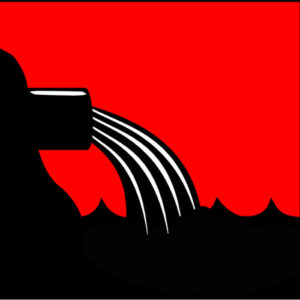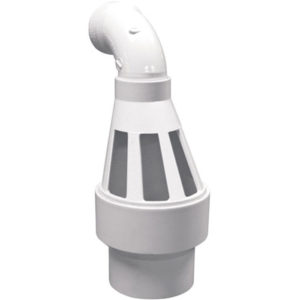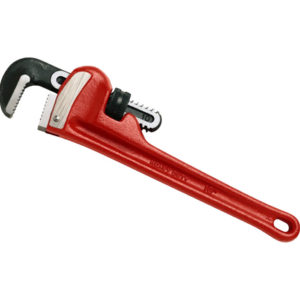
Introduction
In this article, we are going to give you some ideas about the sump pump installation. Besides, we are going to explore how does a sump pump work and how you should maintain it. A sump pump is a pump in your basement that is connected to your sump basin. A basin that collects all the underground water in your home or flood water depending on it’s intended purpose. The pump drains the excess water from the sump basin and moves it to the sewage outlet. (in some areas you cannot pour water directly into the sewer because of local regulations).
The pump can be a pedestal sump pump, or it could be submerged in the sump basin. Those that are submersible sump pumps require less maintenance, but they have a much shorter life when compared to those that are mounted on a pedestal. It is also more difficult to get to them. And you might even need to break the concrete floor to dig them out.
The Guide
We should start things off by talking about testing a sump pump before setting it up in your basement to collect all that excess moisture:
-
You should begin by checking the sump pump pipe for debris and dust so it does not clog up the drain.
-
After that, the electric cords need to be checked by plugging and unplugging them. If the pump starts running after you plug it back in, then all should be fine.
-
Remove the lid from the sump crock and then pour some water in the crock. The pump should then start pumping water on its own without any additional input. After it pumps the extra water out, the pump should turn off on its own.
If any of these tests fail, you should order a replacement pump. If it is below freezing, you should check the pipes for ice build-ups and remove any clogs from them. Another thing to consider is the sump pump check valve. That is an addition to the pump that prevents the water from leaking out. It does that by not letting the gravity do its work with the one way stop. It should extend the life of the pump and also decrease the electricity bill.
A sump pump can run continuously for a very long time if it is properly maintained. It is supposed to run for years if it doesn’t jam or run dry and it is adequately cooled, depending on the quality of the pump itself.
Sump Pump Installation and Maintenance Guide
How to install and test your new sump pump

Common sump pump problems
The unpleasant odor coming from the pump
When you are pumping dirty water, you might end up with a really nasty sump pump smell. The sump pump odor can be removed by making sure that there is always some water in the pipes. The smell might also be coming from the basin itself. – If there is a nasty smell permeating in the basement you should try cleaning the sump basin walls with bleach. That should mitigate the problem
The problem might also come outside your home – there might be a blockage in the sewage pipe. If that is the case, you need to locate the exact location of the blockage to remove it.
![]()
Sump pump suddenly stops working
Sometime, after your sump pump installation, you might experience sump pump failure for no apparent reason. When that happens, you should 1st see if the sump pump has power. The plug might have disconnected from the outlet because of the vibrations from the pump. If it has been dry for weeks, you might need to pour some water to get it primed so it could start working. You should also see if there is any blockage in the intake or in the discharge pipe and remove it. There is also a possibility of a product defect, and that is why needs proper testing when you 1st set up your pump.

Sump pump makes a lot of noise
There are many causes for sump pump noise that is over the acceptable level. How noisy a sump pumps system depends on many factors, including:
- Pump design
- Location within the sump pit
- Device condition
- Sump pump materials
click here to see best sump pump reviews about materials
We are going to look through some of the more common issues and offer solutions:
Movement based noises
-
Hearing excess vibrations – that usually happens when the discharge pipe make contact with a hard surface. The solution is to wrap the discharge pipe with foam in order to insulate it from contact.
Sump Pump Installation and Maintenance Guide
Vibration Type Of Noise
-
A noisy motor – The motor might be noisy since it needs lubrication. That is a relatively easy fix. Another cause might be its casing. PVC pipe casings are much louder and if it bothers you, you should upgrade to cast iron casings. Submersible pumps also produce much less noise.
-
You hear clanging – the cause is usually the same as with vibrating noises and the solution is also similar–. You need to insulate the discharge line pipes in order to stop it from hitting anything.
Water sounds
-
There is a gurgling noise – This is a common problem with most average pipes. It happens when the water goes back down the discharge pipe during a cycle. The solution is to replace the ordinary valve with a spring valve.
-
There are slurping noises – This happens when the pump dries out and it is a similar sound to the one someone makes when slurping through a straw. You need to make sure that there is water for the pump to pump and also make sure to replace the valve if the need arises. Sump pump repair should then be your top priority
-
There are water hammer noise – Water hammer is a specific plumbing noise, not a generic name for pipe clatter. Water hammer can be a big thump that shakes the house, or a series of banging noises starting with a loud bang followed by several “echoes”. It occurs when you shut off the water suddenly and the fastmoving water rushing through the pipe is brought to a quick halt, creating a sort of shock wave and a hammering noise. If the noise occurs when you open a valve or a faucet, it is probably air in the pipes. However, if it occurs when a valve closes or the washer changes cycles, it is probably a water hammer. If it occurs when a pump starts, it could be water hammer, the air in the pipes, or both. Best way to avoid this changing the check valve with the “silent check valve” model.
Sump Pump Installation and Maintenance Guide
Water Hammer Noise

Discharging the water to the neighbor’s property
Since your pump is going to be pumping out a lot of dirty water, you need to be careful where you drain it. There are regulations in place in many areas when it comes to this area and in many cases, you cannot discharge the water directly into the sewer. If you are following those regulations, you might end up discharging water into the neighboring property. That can cause damage to the property of the person living next to you, and you might end up paying the cost. You can be sure that your neighbor will not look kindly to having his garden destroyed by dirty water.
Freezing problems

When it comes to sump pump service, you need to watch out for freezing in an area that has temperatures dropping below zero. The most common problem is when a discharge pipe freezes up if the discharge hose is on the ground that is prone to freezing. The lines are prone to freezing quickly and each time the pump turns on and off, another layer of ice forms inside the hose. That can end up blocking the entire thing. In the end, the whole thing might blow open and flood your home. You could probably hear it if you are in your home, but if you are at work, it can really damage your bank balance.
If the pump does not blow out the hose, it might burn out since it is working overtime to pump out water but it is unable to do so. There are several ways to prevent all of this from happening:

-
-
-
-
-
-
-
-
-
Keep your water running to prevent it from freezing – If the water in your pipes stops moving, it is more likely to freeze. Most pumps have a setting for just this occasion
-
Stop the water from making contact with air – this can be done by keeping the pipes underground. But that will also make it harder to locate the problem once it happens
-
Make sure that the discharge is sloped – if the gravity does the work for you, then you will not have to worry about water remaining in pipes.
-
Insulate the pipes – that makes sure that the temperature drop in the pipes is not as severe
-
-
-
-
-
-
-
-
How to install a sump pump, sump pump installation cost
When you are making your decision on how to install a sump pump, the first thing to consider is whether to call a plumber or to do it yourself. Before sump pump installation, you need to consider the cost of having a professional doing it when compared to doing it yourself. Most homeowners get a professional plumber for their 1st sump pump installation and when it comes to replacing it, they do it themselves since most of the work is already done – the connections are there, the sump basement has been built. The only thing that needs to be done is to replace the pump itself.
please click here to learn about sump pump costs
The cost of installing a pump is between $900 – $1500. There are many factors to consider that will impact the cost:
- Type of a sump pump – submersible pumps are much more difficult (expensive) to install than pedestal pumps since they require digging
- Geographic location – some plumbers might charge more in one state or county when compared to another
- Type of floor – Digging through gravel is easier than digging through concrete and that is reflected on the price
Sump Pump Installation and Maintenance Guide
How to install a sump pump
If you want to do sump pump installation yourself maybe to avoid some of the extra labor costs, you need to prepare well. There are just too many factors to consider when planning to install those powerful pumps into your basement floor. So, we feel that placing incomplete info in this short article would be irresponsible. That is why we have embedded a video will much explanatory on the DIY installation of a sump pump. Please check it out here :
please click here to see this video about installing a sump pump (DIY)
Sump Pits, Basins sizes
During the sump pump installation phase, maintain the water level in your sump pit in certain amounts. And dig a hole in the basement floor where your float switch will move freely inside the pit. Those are important things that you should take into account if you choose to install your sump pump using DIY methods. Making the right decisions on the best sump pump basin, sump pump pit, and sump pump cover is also a topic that is likewise too complex for this short article. That is why we have provided you with a link if you want to commit to this undertaking yourself.
please click to learn about sump pits and basin sizes
Sump Pump maintenance

As the temperature gets warmer after winter, the ground thaws and gets saturated with rainwater. So, after your sump pump installation, you need to look check up your sump pump to make sure that it is working properly. A defective pump could ruin your house foundations and destroy your peace of mind. But proper maintenance can prevent that.
-
You need to start things off with inspection – check out if there is an oil slick on the water in the sump basin – if there is, the pump might be leaking coolant and it may need replacement. You then need to check the intake on the pump and clear it out and do the same with the impeller. If you notice any loose wiring on the device, make sure that you have them repaired by a licensed electrician as soon as possible since water and electricity are a bad combination.
-
Testing phase – After you are confident about sump pump installation and the pumps condition, you need to test it by adding a few gallons to your sump pit. If it does not start working on its own, check to see if there is any debris blocking the intake. You should also check out the discharge to see if there is any blockage.
-
Planning ahead –if you are living in flood-prone areas, it might be a good idea to get a backup pump. This is a useful thing to have during a power outage or if the primary pump is unable to cope with the amount of water. Backup pumps need to be inspected and tested in the same way as the primary pumps.
Conclusion
Basement sump pump installation is a topic that requires much thought and planning. If you do not spend an adequate amount of time and energy on the subject, you might end up paying for it a lot later on by changing the whole laminated floors of your house or trying to fix the cracks on foundation walls when the faults of the system start to show. That usually happens water problems arise during heavy rainfall or flooding. You can imagine how many problems a blockage or a short-circuit could cause during such a critical time.
It is our recommendation that you at least talk to a professional when you are building your system since it is only as strong as its weakest link. The weakest link could be a low-quality pump, a poorly made sump basin, bad electrical and pipe connections or just incompatible parts. This article is here to give you an idea of what is needed to make that process as successful and low-cost as possible.
Extra links for more info:
1 https://homeguides.sfgate.com/test-sump-pump-34954.html
2 https://www.popularmechanics.com/home/interior-projects/how-to/a167/how-to-install-sump-pump/
3 http://engineeringfeed.com/find-sump-tank-capacity-sump-tank-volume-calculator



